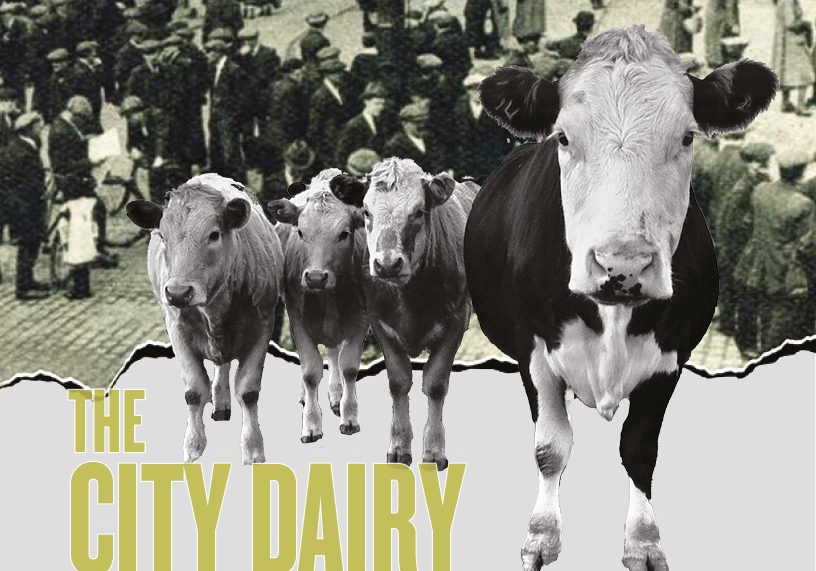
The City Dairy
by Laura Storey
Dave Joy, a Garston-born author, sheds light on the unnoticed efforts behind each milk delivery in his latest book, “The City Dairy.”
Growing up at the family’s Wellington Dairy, author David Joy vividly recalls the crack-of-dawn rituals.

Dave Joy
For generations, the routine delivery of milk was an overlooked daily occurrence. Like magic, a bottle or two would appear on every doorstep just in time for the morning tea. Those early risers might catch the clip-clop of a horse-drawn cart or, in later years, spot the electric milk cart making its rounds. “The horse would be tacked up, the milk loaded, and off we’d go, often unnoticed by our would-be customers. Perhaps the most important thing to share was that this was not merely a job; this was a way of life.”
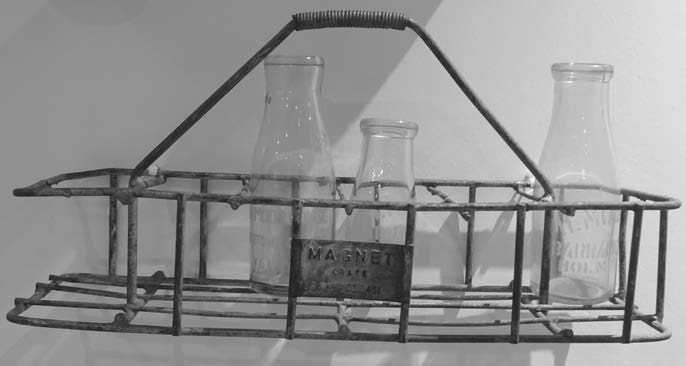
Milk bottles
Nevertheless, this lifestyle started to wane as convenience shops, enhanced refrigeration, and the surge in automobile usage became prevalent. By the mid-2010s, the once widespread milk round teetered on the edge of extinction. Motivated by a desire to preserve the memories of this vanishing way of life for future generations, Dave has penned several books that vividly capture the essence of daily life in a dairy.
“Gone were the fields and pastures, to be replaced by a cattle shed and yard”
In his most recent work, “The City Dairy,” Dave Joy meticulously traces the history of the milk round, chronicling its evolution from the inaugural City Dairies. The tale begins ironically in the countryside, as farmers of the Industrial Revolution migrated to cities like Liverpool and Manchester, bringing with them the tradition of dairy farming.
“Gone were the fields and pastures, to be replaced by a cattle shed and yard,” Dave explains. “At each milking, there’d be a queue of housewives at the dairy counter, waiting for the fresh, warm milk to be dispensed into their white, quart jugs. Between rounds, the cows would be turned into the yard for some exercise while the shed was cleaned and fresh fodder prepared. “The demand for milk was so great that some cities boasted a dairy at the end of every street.”

Milk cans
For the next hundred years, the cow keepers fought a rear-guard action against the mighty corporate dairies and their attempts to monopolise the liquid milk market. The cow keepers continued to produce their milk, selling it ‘fresh from the cow’ over the dairy counter and out on the milk round.
“At each milking, there’d be a queue of housewives at the dairy counter, waiting for the fresh, warm milk”
These dairies were kept in the family, handed down through successive generations.” Dave’s family, originally Yorkshire farmers, established their dairy in Liverpool, creating a time capsule at Wellington Dairy. While societal and technological advances raced forward, the Joys clung to tradition, delivering milk in a horse-drawn van even as the world marvelled at space exploration. As a child working in the dairy, Dave found it magical—a haven removed from the modern world. The Joy family still relied on horses—Danny, Rupert, and Peggy—for their milk rounds.
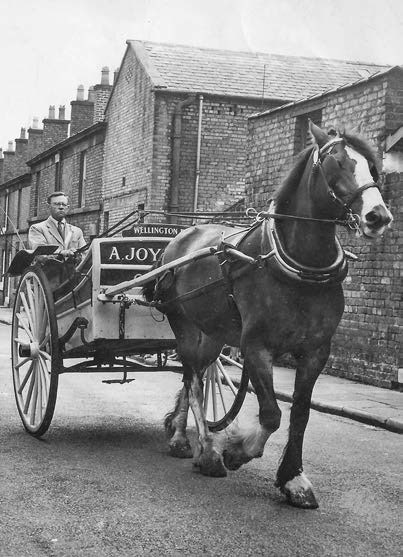
Wellington Dairy’s horse and cart
Horses became essential team members, delivering milk to the streets of Garston in perfect partnership. “We did two rounds per day. Dad would leave Rupert standing at the bottom of the street while he delivered the milk to the doorstep using a hand crate. Then there’d be a call of “Come on!” and Rupert would set off on his own, no one at the reins until he caught up with Dad, who would then refill the hand crate ready to deliver to the next block of houses. In this way, they delivered to the terrace streets of Garston every day, working in perfect partnership. The horse was an essential member of the team and was more than likely why the business could remain viable for so long.
“Dad carried out this work with knowledge, experience and passion honed over a lifetime”
“Interspersed with that were other jobs such as visiting the docks to collect giant sacks of sawdust from the quayside timber yards, or going to the cemetery to rake off the cut grass as a dietary supplement for the horses, or, my favourite, visiting the Smithy to have the horses shod. My Dad carried out this work with knowledge, experience and passion honed over a lifetime. I felt so proud sitting in the milk float with him. It felt right like I was part of A Joy & Sons, part of Wellington Dairy. There is something special about the sight, sounds and smells of working horses, something that by then was already becoming novel. Today, I’m fortunate to have a bridle path pass my property, and the sound of a trotting horse still gives me goosebumps.”
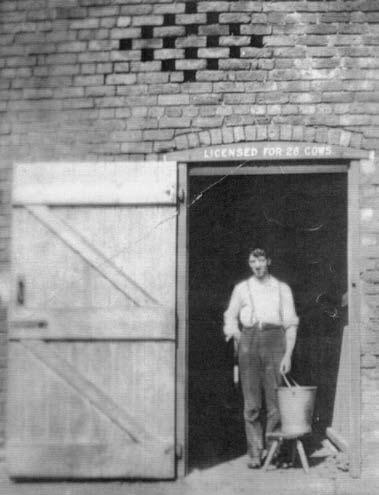
Wellington Dairy
Following the success of his previous book, ‘Liverpool Cow Keepers’, Dave received an outpouring of stories from readers discovering their cow-keeping ancestors. ‘The City Dairy’ weaves these tales, featuring handwritten memoirs and photos of a bygone era, celebrating the enduring legacy of the milk round. In celebrating the tradition and nostalgia of the milk round, ‘The City Dairy’ invites readers to savour the timeless charm of a bygone era, where the clink of milk bottles and the steady trot of horses symbolise a simpler and more connected way of life. However, it’s not just a stroll down memory lane; it’s a glimpse into the future. The resurgence of the milk round, fuelled by a desire for sustainability and a return to authentic, community-centric experiences, paints a promising picture. Today, many of us are seeking the comfort and reliability of the morning milk delivery and the clink of milk bottles, once fading into the background, is now poised to leave its mark on the modern world.
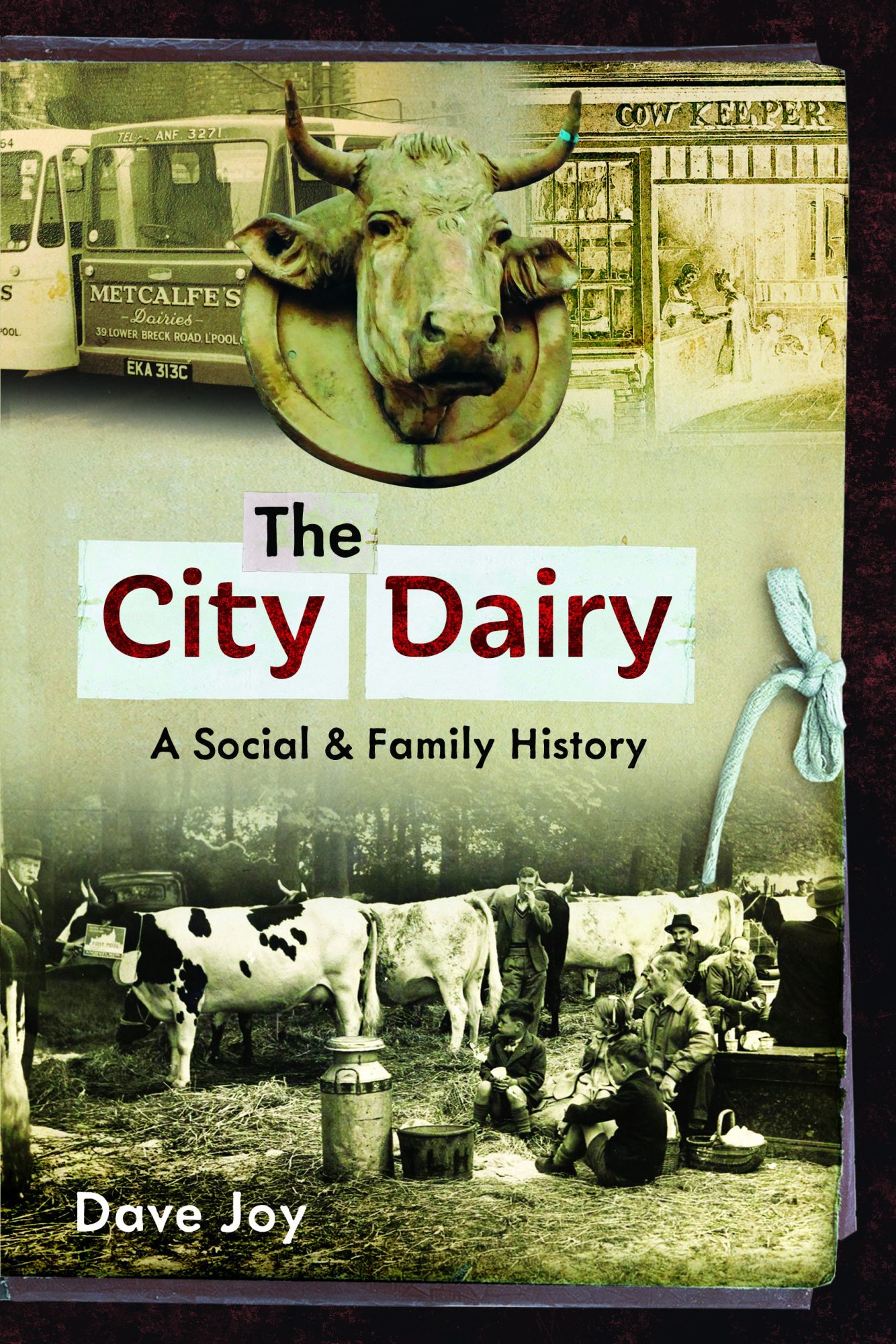
The City Dairy is available now. £16.99. Published by Pen and Sword.
NorthernLife March/April/May 23



